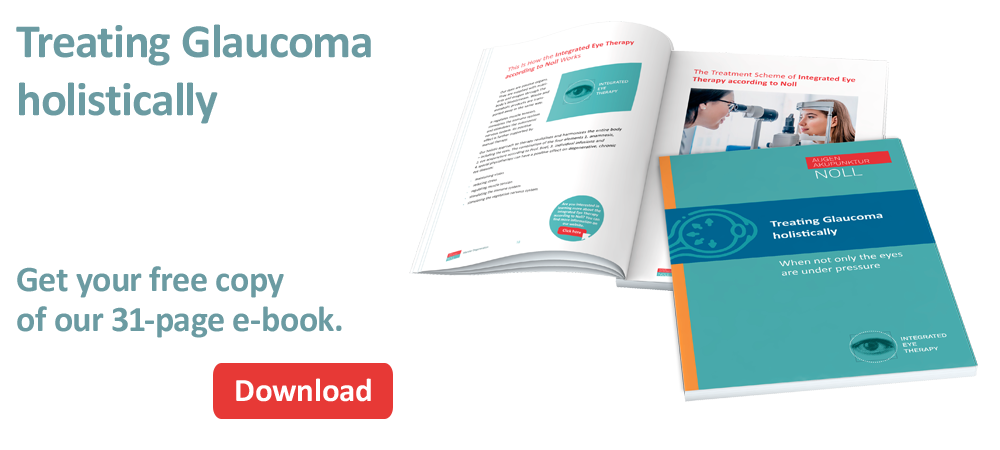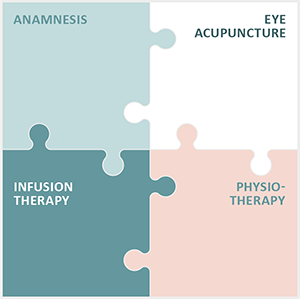Low-pressure glaucoma treatment

Low-tension glaucoma treatment – we provide a complete overview of the various treatment methods for angle-closure glaucoma
Low-pressure glaucoma
The disease, formerly known as low tension glaucoma, is known as normal tension glaucoma and has similar characteristic damage to the optic nerve as conventional glaucoma or primary chronic open angle glaucoma.
The most common type of glaucoma is open-angle glaucoma. However, the classic main symptom is conspicuously absent: increased physical eye pressure acting on the inside of the eye (intraocular pressure).
In normal-tension glaucoma, the intraocular pressure is always within the normal range. This means that patients do not have an intraocular pressure higher than 21 mmHg, but still develop damage due to glaucoma. This phenomenon is generally considered to be the main factor in the development of glaucoma.
In recent years, studies have shown that a normal intraocular pressure in the range of 11 to 21 mmHg by no means excludes the presence of glaucoma.
Experts now assume that almost half of all diagnosed cases of glaucoma in Europe can be attributed to the low-pressure variant.
Causes of low-tension glaucoma
Normal-tension glaucoma is probably caused by a vascular impairment of the optic nerve. Low blood pressure and general circulatory disorders are often associated with it.
An increased sensitivity to intraocular pressure is usually present. In such cases, damage already occurs at pressure levels that can be tolerated by other people without any problems.
The development of glaucoma is gradual, as the blood vessels are not sufficiently supplied with blood in the long term due to a constantly low blood pressure.
This also affects the sensory cells in the eyes, which are damaged if they are not supplied with sufficient nutrients and oxygen.
Diagnosis of low pressure glaucoma
In glaucoma screening, pachymetry, the measurement of corneal thickness, is a precise method for determining intraocular pressure. One challenge with normal-tension glaucoma is that it often remains undetected during a routine examination.
In the context of a suspected diagnosis of glaucoma, the normal pressure variant is usually difficult to identify as the intraocular pressure is not elevated.
To make a diagnosis, the ophthalmologist examines the back of the eye using a slit lamp (ophthalmoscopy). This makes it possible to examine structures such as the optic disc and the blood vessels that supply it.
Normal tension glaucoma often shows small indentations in the area of the optic disc as well as occasional haemorrhages and thinning at the outer edge of the pupil.
A special contact lens called a gonioscope enables the detection of disease processes in the chamber angles of the eye that are associated with the development of glaucoma.
If glaucoma is suspected, visual field measurement (perimetry) provides further information. Laser scanning photography or laser scanning ophthalmoscopy provides a precise visualisation of the optic nerve head in 3D, enabling an accurate diagnosis to be made at an early stage of the disease.
Optical coherence tomography (OCT) is an imaging technique that also helps to confirm the presence of glaucoma.
An eye test is performed to check for possible visual impairment and visual acuity. In the case of glaucoma, such damage is usually only recognisable at a more advanced stage.
As normal pressure glaucoma is often caused by vascular problems, a 24-hour blood pressure measurement is often carried out to detect fluctuations and overall low blood pressure values.
If sleep apnoea is suspected as the cause, further examinations such as a sleep laboratory and a neurological examination may be useful.
An overview of the options for diagnosing low pressure glaucoma:
- Pachymetry: measurement of corneal thickness
- Ophthalmoscopy: examination of structures in the eye using a slit lamp
- Gonioscope: examination of the chamber angle in the eye
- Perimetry: examination of the quality and size of the visual field
- Laser scanning ophthalmoscopy: examination of the fundus of the eye
- Optical coherence tomography (OCT): non-contact examination of the retinal structures
- Eye test: examination of vision and visual acuity
- Long-term blood pressure measurement: measurement of blood pressure over a 24-hour period and creation of a daily blood pressure profile
- Sleep laboratory: examination of various sleep parameters of patients (polysomnography)
Risk factors for low pressure glaucoma
One of the main risk factors for the development of normal-tension glaucoma is impaired blood flow to the optic nerve, and the causes of this can be manifold.
Flammer syndrome
Flammer syndrome is characterised by impaired regulation of the blood supply and is often accompanied by various symptoms, including
- Low blood pressure
- Frequently cold hands and feet
- Low body weight
- Restricted thirst
- Regular migraines
- Tinnitus
- Increased sensitivity to odours or pain
The problem lies not only in low blood pressure, but above all in strong fluctuations in blood pressure. These often occur at night and can lead to significant drops in blood pressure.
Sleep apnoea
In sleep apnoea, the muscles of the upper airways relax during sleep and lead to a constriction in the throat area.
This often manifests itself as loud snoring when breathing in and out. The pauses in breathing during sleep mean that the body is not supplied with sufficient oxygen during these phases.
Metabolic syndrome
Metabolic syndrome is a collection of risk factors that increase the risk of cardiovascular disease and type 2 diabetes.
It consists of four factors that are considered high risk factors for circulatory disorders:
- Obesity, severe overweight, especially in the abdominal area
- High blood pressure
- Insulin resistance, for example in the form of type 2 diabetes mellitus
- Disorders in fat metabolism and abnormal blood lipid levels
Treatment of low pressure glaucoma
A decisive factor in the treatment of normal-tension glaucoma is to prevent the progression of optic nerve damage. The treatment options vary depending on the severity of the disease and the individual findings.
A key aspect is the regulation or optimisation of blood pressure to a healthy level. This is usually achieved by
- Drug therapy (e.g. miotics, the longest known medication)
- A significant and sustainable change in lifestyle
- Consistent weight management
- Sport! regular, moderate physical activity with an increase over time
As with macular degeneration, diet also plays an important role, with antioxidant foods such as healthy vegetable fats, omega-3 fatty acids and an abundant intake of vegetables and berries being recommended. Adequate fluid intake, stress management, abstinence from nicotine and sufficient sleep all contribute to good health.
The treatment of normal tension glaucoma requires interdisciplinary collaboration between different medical specialities to address the underlying causes. There is no one-size-fits-all treatment, as therapy must be customised.
In some cases, eye drops, laser treatment or surgery may be recommended as complementary measures.
Prognosis for the clinical picture of low tension glaucoma
As with most eye diseases, the timing of treatment is a decisive factor in the prognosis of normal tension glaucoma. Recognising the disease at an early stage significantly improves the chances of success.
Treatment should always aim to address the underlying cause in order to positively influence the course of the disease.
Continuous medical monitoring is of great importance, as blindness can occur in the long term if left untreated. Successful treatment of the underlying disease can often lead to extensive freedom from symptoms.
However, it is important to permanently control the underlying blood pressure problems. Lifestyle changes also play a decisive role in prevention.
Advanced approaches in the treatment of low tension glaucoma through the Integrated Eye Therapy according to Noll
Eye Acupuncture Noll specialises in the treatment of chronic and degenerative eye diseases, including low tension glaucoma. Our customised Integrated Eye Therapy according to Noll, developed by Michaela Noll, is based on four fundamental elements:
- A comprehensive medical history that covers every aspect of health
- Eye acupuncture according to Prof Boel, which is specifically tailored to eye conditions
- Customised infusions tailored to the specific needs of eye health
- Specialised physiotherapy designed to support the overall condition of the eyesight
For over 13 years, our practice has been dedicated to improving the quality of life of our patients through advanced treatment methods, and we are particularly proud of the positive feedback we receive after treatments.
Low-pressure glaucoma, also known as normal-pressure glaucoma, is a form of glaucoma in which the intraocular pressure is within the normal range but can still cause damage to the optic nerve. This can be a challenge, as traditional diagnostic methods are often not sufficient to recognise this disease at an early stage.
The Integrated Eye Therapy according to Noll is designed to treat not only the symptoms, but also the underlying causes of eye diseases. We take a holistic view of the patient’s state of health.
We know that every patient is unique, which is why our therapeutic approach is flexible and patient-orientated. It is important to us not to make unrealistic promises about the results of our therapies, but to set realistic goals based on scientific findings and extensive medical experience.


